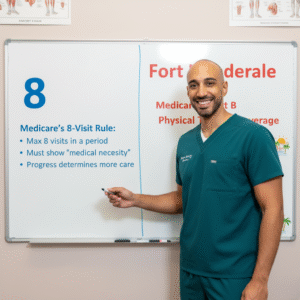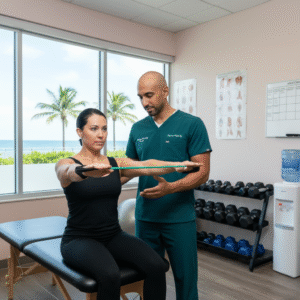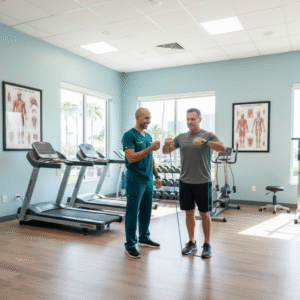Chronic neck pain affects millions of people worldwide, often impacting daily activities and reducing overall quality of life. Whether caused by poor posture, injury, or degenerative conditions, persistent neck pain can be debilitating. Fortunately, physical therapy offers effective exercises specifically designed to relieve pain, improve mobility, and strengthen neck muscles.
In this blog, we’ll explore some of the most effective physical therapy exercises for chronic neck pain relief, helping you regain comfort and function safely.
Understanding Chronic Neck Pain
Chronic neck pain is typically defined as pain lasting longer than three months. It can stem from various causes such as muscle strain, cervical disc problems, arthritis, or nerve compression. Physical therapy focuses on addressing the underlying issues through targeted exercises that restore strength, flexibility, and alignment.
Benefits of Physical Therapy for Neck Pain
- Reduces muscle tension and stiffness
- Enhances neck range of motion
- Strengthens supporting muscles
- Improves posture and spinal alignment
- Prevents future injuries and flare-ups
- Decreases reliance on medications or invasive treatments
Top Physical Therapy Exercises for Chronic Neck Pain Relief
1. Neck Stretching
Gentle stretching reduces muscle tightness and improves flexibility.
How to do it:
- Sit or stand upright.
- Slowly tilt your head toward your right shoulder until you feel a stretch on the left side.
- Hold for 15-30 seconds, then switch sides.
- Repeat 3-5 times per side.
2. Chin Tucks
Chin tucks strengthen deep neck flexors and improve posture.
How to do it:
- Sit or stand with your spine straight.
- Gently pull your chin backward, creating a double chin without tilting your head.
- Hold for 5 seconds and release.
- Perform 10 repetitions, 2-3 times daily.
3. Neck Rotations
Improves cervical spine mobility and reduces stiffness.
How to do it:
- Turn your head slowly to the right as far as is comfortable.
- Hold for 5 seconds.
- Return to center and repeat on the left side.
- Do 10 repetitions on each side.
4. Shoulder Blade Squeezes
Strengthening upper back muscles supports the neck and promotes good posture.
How to do it:
- Sit or stand with your arms by your sides.
- Squeeze your shoulder blades together as if pinching a pencil.
- Hold for 5 seconds, then relax.
- Repeat 10-15 times.
5. Isometric Neck Exercises
These exercises build strength without excessive movement, making them suitable for pain management.
How to do it:
- Place your hand on your forehead.
- Push your head gently against your hand without moving your neck.
- Hold for 5 seconds.
- Repeat by placing your hand on the back of your head and each side.
- Perform 5-10 repetitions per direction.
6. Levator Scapulae Stretch
Targets a common source of neck pain.
How to do it:
- Sit or stand, place your right hand behind your head.
- Gently pull your head diagonally forward toward your left armpit.
- Hold for 20-30 seconds, then switch sides.
- Repeat 2-3 times per side.
Tips for Safe and Effective Neck Exercise
- Warm up your neck with gentle movements before starting.
- Avoid sudden or jerky motions that could worsen pain.
- Perform exercises slowly and within a pain-free range.
- Maintain good posture throughout exercises.
- Stop any exercise that increases pain and consult a physical therapist.
When to Seek Professional Help
If neck pain is severe, persistent, or accompanied by symptoms like numbness, tingling, or weakness in the arms, consult a healthcare professional. A physical therapist can design a personalized exercise program tailored to your condition and monitor your progress safely.
Final Thoughts
Chronic neck pain doesn’t have to control your life. Incorporating targeted physical therapy exercises can significantly reduce discomfort, improve mobility, and strengthen your neck and upper back. Consistency and proper technique are key to achieving lasting relief.
Always consult with a qualified physical therapist before starting any new exercise routine, especially if you have an underlying health condition. With the right guidance and commitment, you can reclaim your neck health and enjoy pain-free movement.






